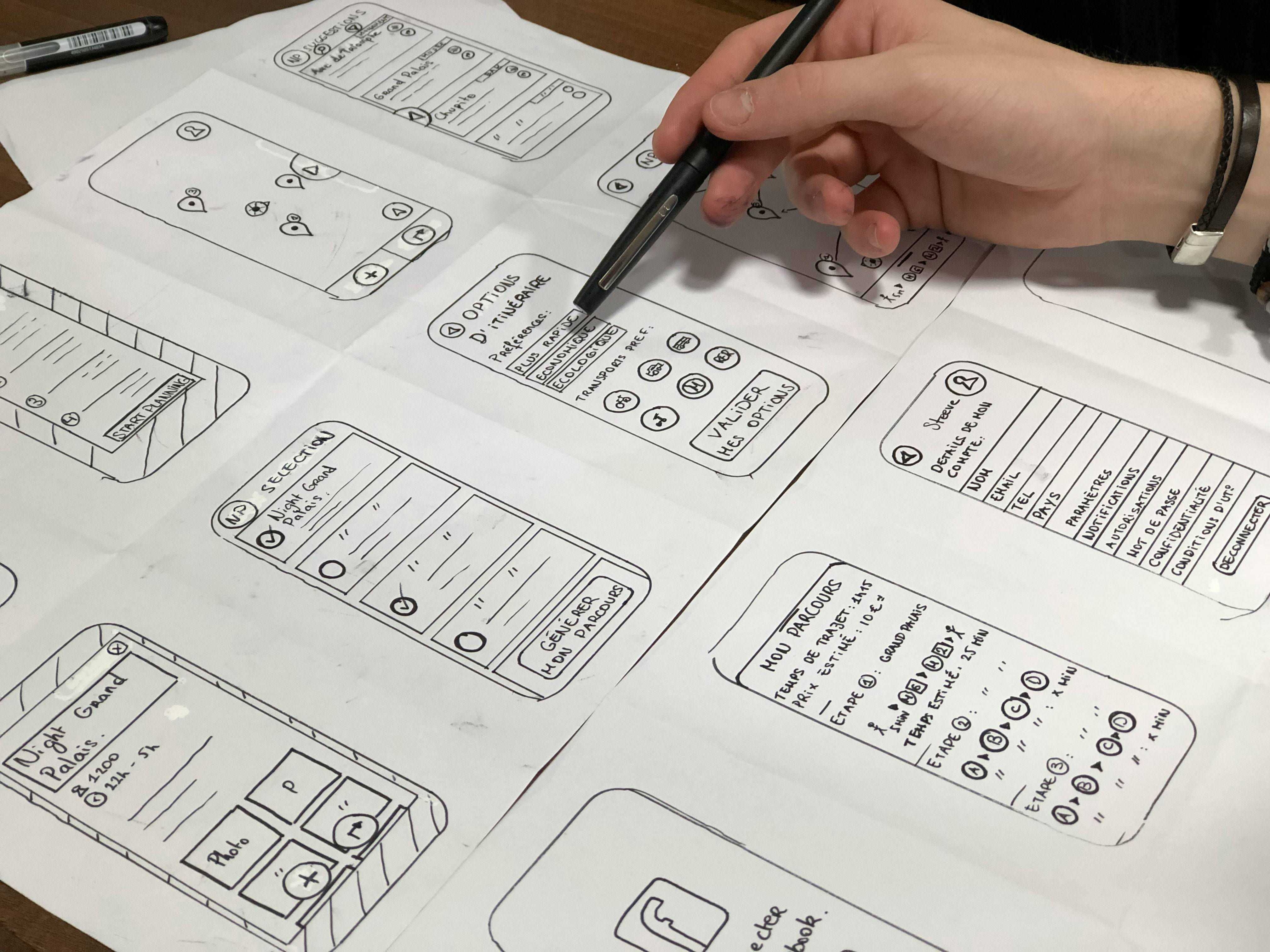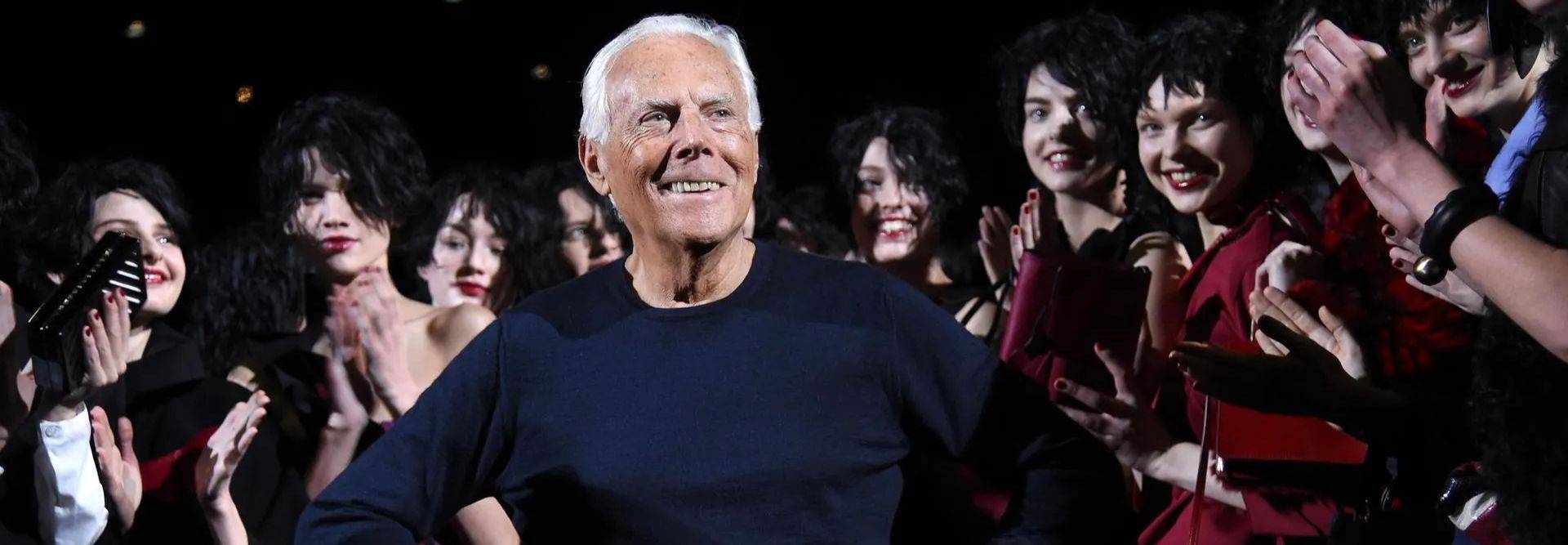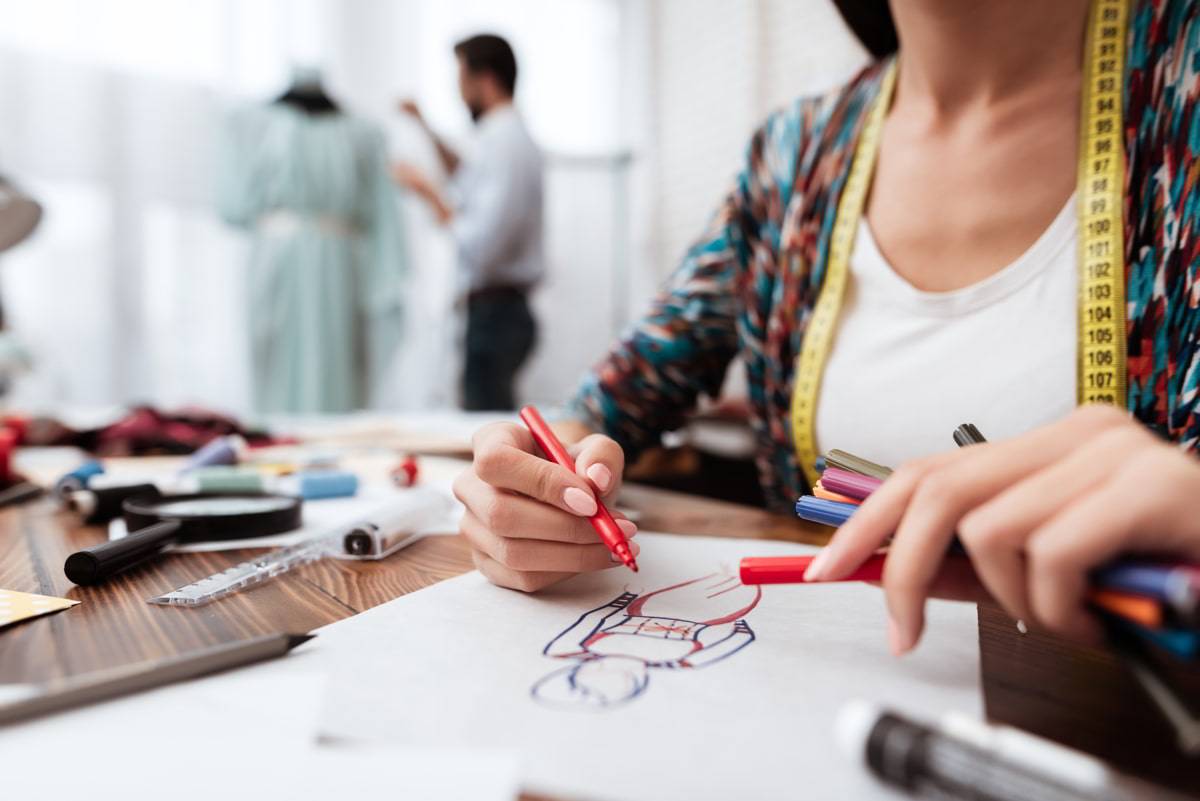Differences between UX vs UI: the definitive guide
If you're attracted to digital design, it's normal to get mixed up with UX and UI. They are similar in name, they work together, and sometimes one and the same person touches both disciplines. Even so, they are not the same. Here is a clear guide, with real examples of products you use every day, to help you decide which path suits you and how to train in UDIT - whether you are in high school and thinking about the Bachelor's Degree in Multimedia and Graphic Designor if you are already working in the sector and are looking to specialise with the Master's Degree in User Experience - without wasting time.
What is UX and what is UI
UX (UserExperience )
What it is: Designing a person's complete experience with a product or service. This includes understanding real needs, defining user flows, testing prototypes and measuring whether it really works for the user.
What it is not: UX is not "making pretty screens". UX decides what should happen and why, before painting anything on the screen.
UI (UserInterface )
What it is: Designing the visual interface and its interaction: fonts, colour, icons, buttons, spacing, micro-animations and the states of each element.
What it is not: UI is not just "decorating" what is already there. UI brings UX decisions down to earth and creates a coherent and usable visual language.
Key idea:UX defines the path; UI makes that path passable. If the UX decides to simplify the registration process, the UI designs the form that makes it easy and attractive.
UX vs UI: direct comparison
Dimensio n | U X | U I |
Objectiv e | That the product solves a real problem in a useful and fluid way. | That the interface is clear, pleasant and coherent. |
Starting point | User research, business and available data. | Visual systems, interaction patterns and brand guidelines. |
Deliverable s | Personas/Jobs to be done, experience maps, information architecture, user flows, wireframes, prototypes and test plans. | Moodboards, style guides, design systems, high fidelity layouts, iconography, reusable components and microinteractions. |
Day-to-day tasks | User interviews, usability testing, qualitative and quantitative data analysis, flow definition, prototyping and continuous validation. | Visual layout, working with typography, colour, spacing, icons, states, visual accessibility and handoff to development. |
Typical tools | Figma/FigJam for design and collaboration, Miro for workshops, Maze or Useberry for remote testing, Hotjar or Mixpanel for analytics. | Figma for interface design, component libraries, code inspectors, high fidelity prototyping tools. |
Success metrics | Task success rate, average time to complete tasks, conversion rate per flow, user retention, satisfaction (SUS/NPS) and friction point reduction. | Perceived clarity in tests, error rate caused by the interface, visual consistency between screens, speed of design with the system and readability. |
Collaboration s | Product, business, data/analytics, engineering and customer support teams. | UX, frontend engineering, branding, product marketing and accessibility teams. |
Career opportunities | UX Researcher, UX Designer, Service Designer, Product Designer (with focus on UX). | UI/Visual Designer, Product Designer (with focus on UI), Design System Designer. |
Real-life examples: UX and UI in products you know
Before going to the detailed example, take a look at how these disciplines work in products you probably use:
Examples of UX decisions
- Spotify Discover Weekly: The algorithm that creates personalised playlists every Monday is no accident. It's the result of UX research that identified that users wanted to discover new music effortlessly. The decision to make it weekly (not daily) and on Monday (start of the week) came out of tests with real users.
- Amazon 1-Click checkout: Reducing the checkout process to a single click eliminated multiple friction steps. This UX decision increased conversions because it understood that users were abandoning at the traditional checkout.
- Airbnb visual search: Allowing people to search for accommodations by map instead of just by listing addresses a real need: people want to see where each place is before they decide. This information architecture came from understanding how travellers think.
Examples of UI decisions
- Instagram's dark mode: It's not just aesthetics. The dark mode design uses specific contrasts that meet accessibility standards, reduces eyestrain in low-light environments and maintains the visual hierarchy of content.
- Neomorphism in Apple Music: The use of subtle shadows and depth effects on buttons creates an interface that looks physical. This UI decision makes the controls more recognisable and satisfying to use.
- Netflix card design: The size, spacing and the way thumbnails appear when hovering are not accidental. Every UI decision aims to allow you to quickly scan through the options without feeling overwhelmed.
A complete example: ordering food from mobile
Imagine a food delivery app. The goal is clear: you can order in less than two minutes, without getting the wrong address or payment method. Let's see how UX and UI work together.
How the UX (the experience ) approaches it
Spot the real problems: Conduct interviews with users who abandon the process. Find out that many are lost when choosing extras (are they mandatory? how much do they cost?) and others are wary of payment (when exactly will I be charged?).
Define the ideal flow: Search for the restaurant → see the menu clearly → customise the dish without hassle → see all the costs from the beginning (including shipping) → pay quickly with the saved method.
Prototype and test: Create low-fidelity prototypes (wireframes on paper or Figma) and test with 5-8 users. See where they hesitate, measure how long each step takes and count errors. Find out that people don't see the shipping cost until the end and that leads to abandonment.
Adjust the design: Simplify the customisation steps, show the total cost (dish + extras + shipping) from the menu, and hide advanced options (allergies, special instructions) in a secondary drop-down.
Validate with data: Retest with real users and see that the average time drops from 4 minutes to 2 minutes and the checkout abandonment rate drops by 35%.
How the UI (interface ) brings it down to earth
Create the visual system: Choose a typeface legible on small screens (Inter or SF Pro), a colour palette where green (primary action) is clearly distinguishable from grey (secondary) and red (error), and design clear icons for spicy, vegetarian and gluten-free.
Design the components: Create dish cards with photo, name, price and labels; size selectors with radio buttons; an extras counter with large tactile + and - buttons; primary buttons with sufficient contrast; and red error messages with icons.
Establish visual order: Create a hierarchy where the total price and the "Add to cart" button are always visible at the top (sticky header), photos are proportionally sized so they are not distracting, and the background is white to give prominence to the content.
Add feedback: Design microinteractions when adding to cart (the button animates and shows a check), loading statuses with a skeleton screen (not a generic spinner), and visual confirmations with a toast that appears briefly.
Ensure accessibility: Check that the contrast between text and background is sufficient for people with low vision, that buttons have a minimum size of 44x44 pixels (Apple and Google standard), that the order of focus is logical for those navigating with a keyboard, and that error messages are clear without relying solely on colour.
Which profile fits you (quick self-diagnosis ) ?
Check the phrases you feel are yours:
UX profile
- I like to question people and understand why they do what they do.
- I enjoy simplifying complex processes and arranging information in a logical way.
- I am interested in testing ideas with real people and adjusting based on what I learn.
- I am motivated by solving problems rather than choosing the perfect colours.
- I like working with data: looking at metrics, analysing patterns, finding insights.
If you checked the majority: Your focus may be on UX.
UI profile
- I love to compose with fonts, colours, icons and spacing until everything fits together.
- I'm very detailed with alignments, element states and microinteractions.
- I care about visual coherence and a well-documented design system.
- I feel satisfaction when a screen is understandable at a glance and pleasing to the eye.
- I enjoy creating component libraries and seeing how they are reused.
If you checked most: Your focus may be on the UI.
Half and half?
No problem. Many profiles evolve towards Product Design, where you balance UX and UI depending on what each project asks for. In small startups, it is common for the same person to cover both areas; in large companies, the roles are usually more separated.
Roles and deliverables you'll see on a day-to-day basis
- UX Researcher: Research plan, structured interview scripts, findings reports with actionable insights, user personas or archetypes, empathy maps and prioritised recommendations for the product team.
- UX Designer: Information architecture (sitemap, taxonomies), user flows (user flows, task flows), low and medium fidelity wireframes, interactive prototypes, usability test plans and analysis of results with proposed improvements.
- Product Designer (focused on UX): Prioritises problems according to impact and effort (RICE or ICE framework), designs solutions, tests with real users, iterates according to feedback and works together with the product and engineering teams in 2-3 week sprints.
- UI/Visual Designer: High fidelity layouts in Figma, style guides (typography, colour, spacing, iconography), reusable component libraries, usage examples for the development team and design of microinteractions and states.
- Design System Designer: Design tokens (colours, fonts, spacing in reusable variables), documented components with variants and states, usage rules and best practices, accessibility documentation (WCAG 2.1 level AA), system versioning and governance to maintain consistency.
Tools and metrics
Tools you will probably touch
To think and collaborate: FigJam and Miro help you to work in teams, do ideation workshops, create affinity maps and visualise user flows in a collaborative way.
To design and prototype: Figma is the standard tool for the market in 2025, both for low-fidelity wireframes and for final designs and interactive prototypes. It is cross-platform and automatically saves to the cloud.
For research and evaluation: Maze and Useberry for remote and unmoderated usability testing, Hotjar for heat maps and session recordings, Mixpanel or Amplitude for product analytics and event tracking.
For design systems: Component libraries in Figma with variants and properties, documentation in Notion or Storybook, code inspectors like Anima or Figma Dev Mode for easy handoff to development.
Metrics that matter
In UX: Task success rate (how many users complete the goal?), average time to complete each task, abandonment rate per flow step, overall flow conversion rate, SUS (System Usability Scale, 68-point benchmark) and NPS (Net Promoter Score) to measure satisfaction.
In UI: Error rate caused by interface elements (poorly designed fields, confusing buttons, unclear states), perceived clarity in qualitative tests ("do you understand what this button does?"), design speed thanks to the reuse of system components and visual coherence between all product screens.
Transversal: Real level of accessibility (not just checklist compliance), consistency of the design system throughout the application and control of design debt (obsolete components, out-of-date screens).
Accessibilit y
Designing for all people is not an "extra" to be added at the end. It is a responsibility from day one and a competitive advantage. When you design with accessibility in mind, your product works better for everyone.
What you should know: The WCAG (Web Content Accessibility Guidelines) level AA standard is the standard that companies usually ask for. In practice, this means ensuring sufficient contrast between text and backgrounds, minimum touch sizes of 44x44 pixels on mobile, logical order of focus for keyboard navigation, descriptive labels in form fields and clear error messages that do not depend on colour alone.
The UX plans it from the information architecture (does the order of the content make sense?) and validates it with tests that include users with different capabilities. The UI implements it in each component of the system, choosing colours with sufficient contrast, appropriate sizes and clear visual states. Tools like Figma's contrast checker help you check that you meet the standards.
How to train according to your starting point?
If you're in high school and want a solid foundation in digital interface and design
You need to master composition, typography, colour, grid, strategic use of image, interaction principles and the fundamentals of product design. You also need to know the real work processes (research, ideation, prototyping, testing) and practice with real projects using professional tools such as Figma.
Degree in Multimedia and Graphic Design (UDIT): This degree gives you a strong foundation in visual design applied to digital environments. You'll work on projects with real deliverables, learn to think in design systems from the outset and understand both the experiential and interface sides. It is ideal if you are attracted to UI and want to train as a versatile profile that understands experiences and masters interfaces.
→Degree in Multimedia and Graphic Design at UDIT
If you already come from a design or technology background and you are looking to specialise in UX .
You want to delve deeper into applied user research, information architecture, flow definition, prototyping, usability testing and the metrics that really matter in a real professional environment. You need a programme that connects you with methodologies such as Design Thinking, Jobs to be Done and Lean UX.
Master in User Experience for the Design of Digital Products and Services (UDIT): A master's degree with a practical focus, which takes you through complete user-centred design processes and connects you with the reality of the job market from day one. You will learn to validate hypotheses with data, to prioritise functionalities according to impact and to work in multidisciplinary teams.
→Master's Degree in User Experience for the Design of Digital Products and Services.
Professional projection: demand and salaries in Spain (2025 )
The job market for UX and UI designers is in full growth. According to data from 2024-2025, salary ranges for UX/UI designers in Spain go from 35,000 to 42,000 euros per year with 1 to 3 years of experience, from 42,000 to 48,000 euros with 3 to 5 years of experience, and from 48,000 to 60,000 euros with more than 5 years of experience. For junior profiles, the range is between 24,000 and 36,000 euros per year.
This data varies according to the city (Madrid and Barcelona tend to pay more), the sector (fintech and ecommerce tend to pay better) and the type of company (startups vs corporations). The important thing is that demand exceeds supply: companies are actively looking for these profiles and it is difficult to find well-trained candidates.
Typical mistakes when choosing (and how to avoid them )
- Confusing "I like to draw" with "just UI": UI is much more than aesthetics; it is about building coherent systems, thinking about scalability and ensuring that each component works in all possible contexts.
-Thinking that UX avoids visuals: UX draws a lot, but mostly at the beginning of the process: wireframes and prototypes to think, validate and communicate ideas before moving to high fidelity.
- Skipping user validation: Without testing with real people, there is no UX. There is only guesswork disguised as design. Even a test with 5 users can reveal 85% of usability issues.
- Designing without thinking about accessibility: Sooner or later this blocks the product or forces you to redo everything. It is much better to integrate it from the start, choosing accessible colours, comfortable tactile sizes and clear statuses.
- Not documenting decisions: In large teams, if you don't document why you decided something (in Figma's own file or in Notion), the knowledge is lost and the next designer will start from scratch.
Conclusio n
UX and UI are not in competition with each other. They need each other to create digital products that really work. One researches, defines and validates the path; the other makes it visible, usable and enjoyable to navigate. Understanding the difference saves you doubts, helps you to choose your specialisation with criteria and brings you closer to what you really want: to design digital products that people use easily, recommend without being asked and use again because they really solve their needs.
The job market is crying out for these profiles. Companies are looking for designers who understand people, who know how to validate hypotheses with data and who master professional tools. If you train well from the beginning, with real projects and processes that are used in the industry, you will have a clear competitive advantage when you start looking for your first job or your next specialisation.
Frequently asked questions
Can I work in UX without being an "artist"?
Yes, absolutely. UX is about solving problems and validating hypotheses with scientific method. You need clarity to communicate ideas, genuine curiosity to understand people and analytical skills to interpret data. Drawing helps you with wireframes and sketches, but it's not art: it's visual communication to think about and convey solutions.
What about UI? Do you need to know how to program?
It is not mandatory to know how to code, but it is highly recommended to understand the basics of HTML, CSS and how components work in frameworks like React or Vue. This helps you to design with technical boundaries in mind, to speak the same language as the engineering team and to create components that can actually be built. Your main focus is still on the visual system and components, not the code.
ProductDesigner is "do it all"?
Not exactly. It usually means balancing discovery (UX: research, define problems, validate) and delivery (UI: design interfaces, create components, document) according to the context and needs of the team. In small startups, the role is usually broader and touches the whole process; in large companies, more specialised and with clearer boundaries between UX and UI.
What does a team value when hiring junior profiles?
They value that you have a clear process (how you think, what questions you ask, how you make decisions), real ability to learn and adapt, concrete examples of problem → solution → result (even if they are academic or personal projects), genuine care for accessibility from the start, and good communication with the rest of the team (designers, product, engineering).
What shouldmy portfoliolooklike if I'm going for UX?
Your portfolio should show structured case studies: the objective of the project, the context, the research you did (interviews, tests), the hypotheses you made, the flows you designed, the prototypes you created, the tests you conducted with users, the lessons you learned and the next iteration. Less "pretty" screens and more explanation of the rationale behind each decision. Tools like Notion, Medium or Behance work well for documenting case studies.
What if I go for UI?
Show a variety of layouts and components, a mini design system you've created (even if it's for a made-up project), complete states of elements (default, hover, pressed, disabled, error), examples of responsive design (mobile, tablet, desktop) and how you ensure visual consistency between screens. Explain the why behind each decision: why you chose that typeface (legibility, brand personality), that spacing (visual rhythm, hierarchy) or that colour palette (accessibility, emotion). Platforms like Behance, Dribbble or your own web portfolio work well.
How many projects should a juniorportfoliohave ?
3-4 well-explained projects is enough. It's better to have 3 in-depth, well-documented case studies than 10 superficial projects. If you are just starting out, you can include academic projects, redesigns of known apps (explaining what problems you detected and how you would solve them) or personal projects. The important thing is to show your thought process.
Where each discipline fits in
- If you like to listen, synthesise and test: Your natural path is UX.
-If you are obsessed with visual clarity and detail: Your natural path is UI.
-If you are attracted to both disciplines: Product Design allows you to balance both, with a focus that can vary according to each project and the size of the company.
The best thing about all this is that, wherever you start, you will grow as a professional. In a good training plan, you'll see both experiential thinking (research, flows, validation) and the visual system (components, coherence, accessibility) working together to create digital products that people use with ease.









